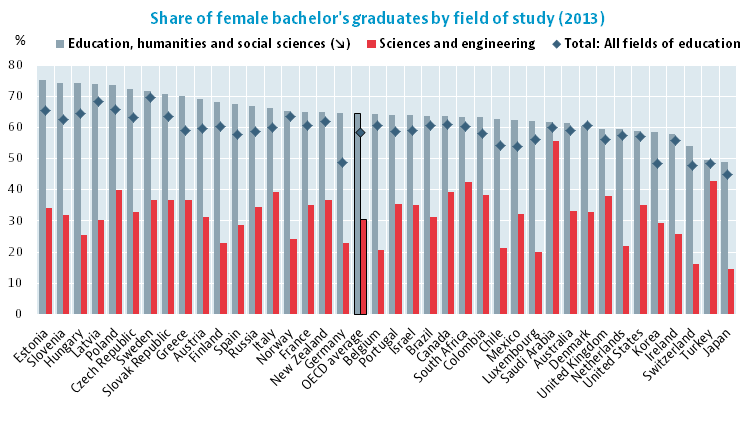Gender gap in education
March 2016 - One of the most remarkable consequences of the expansion of education in OECD countries over the past decades is the reversal of the gender gap in education. From outright exclusion and discrimination in educational institutions less than a century ago, girls and young women have conquered schools and colleges. In 2013, 55% of all students graduating from a general secondary education programme were girls.
But does this trend extend to universities? The numbers are astonishing. In 2013, six million students across OECD countries graduated from a higher education institution with a bachelor’s degree; 58% of them were women. The chart below adds an important dimension to the picture: the gender gap varies across fields of study. Around 64% of bachelor’s degrees awarded in education, humanities and social sciences went to women compare to only 31% of the bachelor’s degrees awarded in sciences and engineering.
These gender differences in bachelor’s degrees across fields of study resemble the divergent career expectations among 15-year-old students, as recorded by PISA, and the gendered life and career choices later on. They also account for a significant share of the gender gap in earnings from employment.
Source: OECD (2015), Education at a Glance 2015: OECD Indicators, (see Annex 3 for notes).
Further reading
Education at a Glance 2015, OECD (2015), OECD Publishing, Paris
Documents connexes


